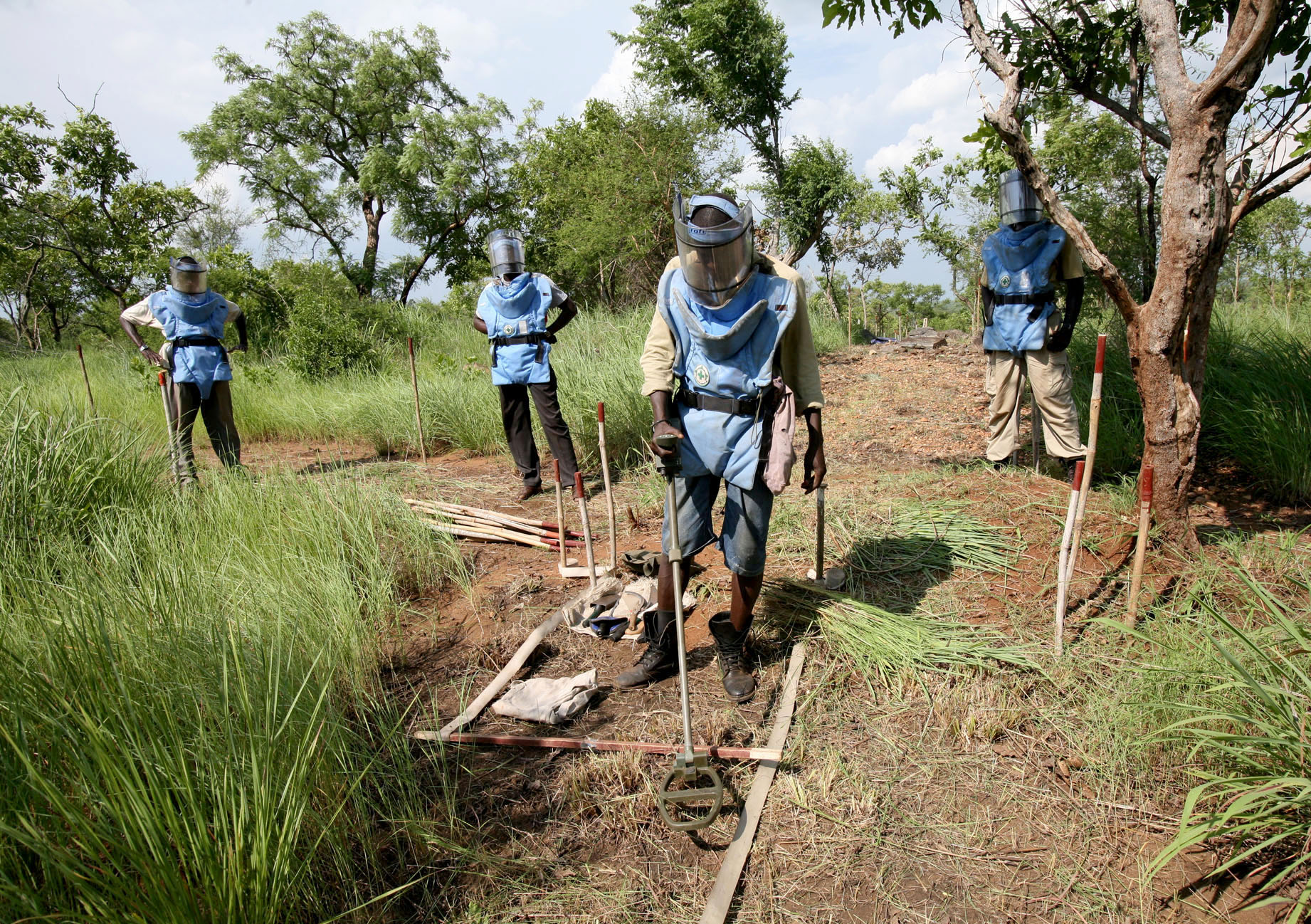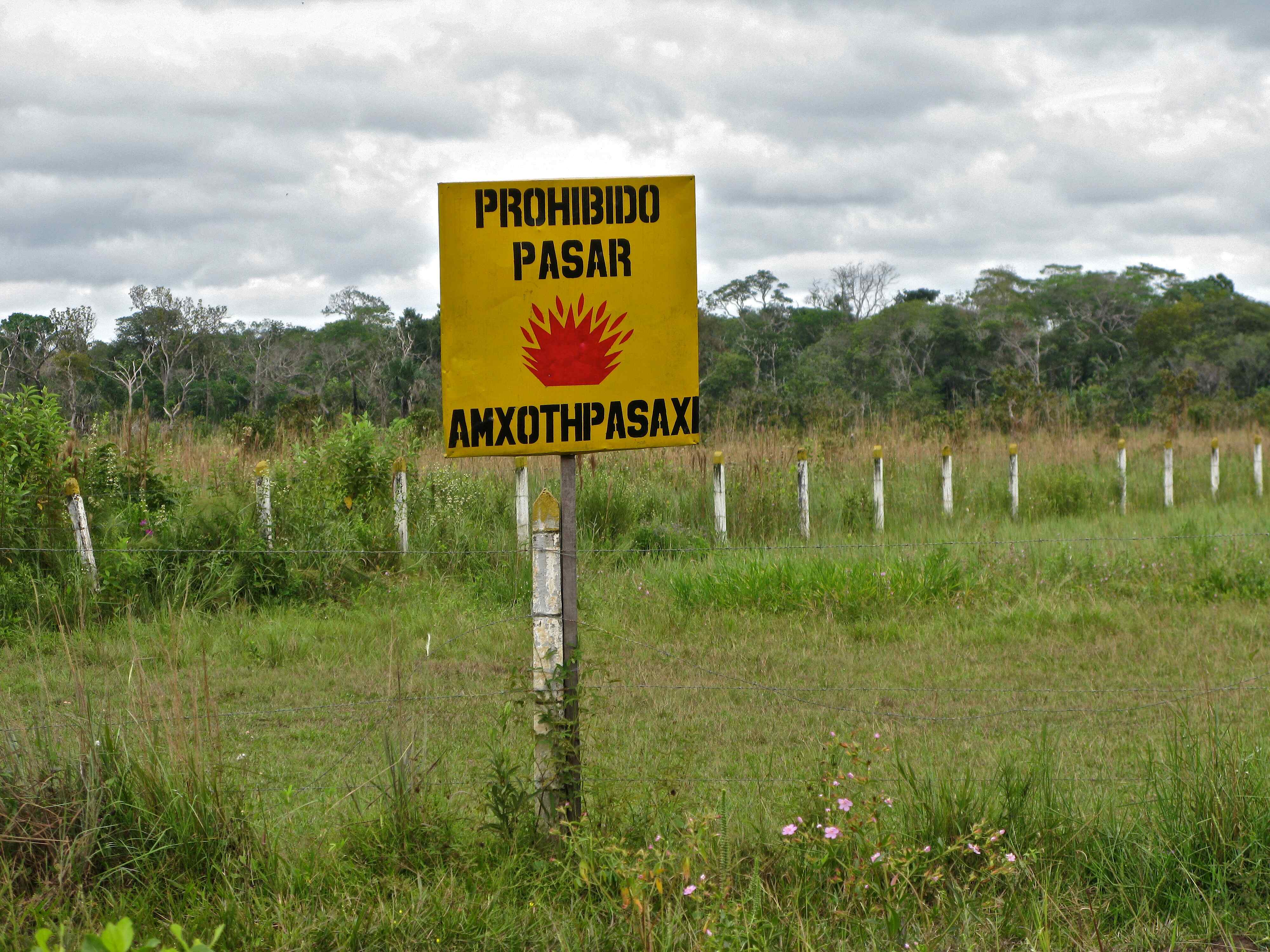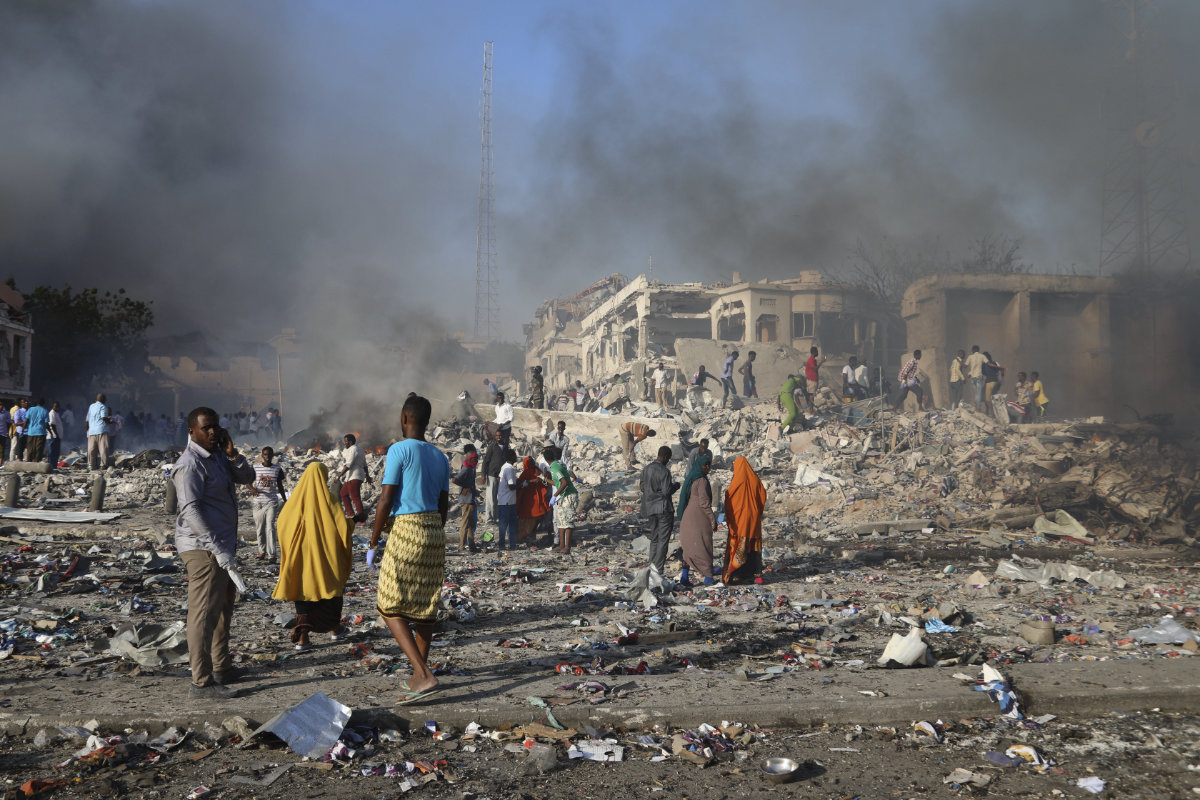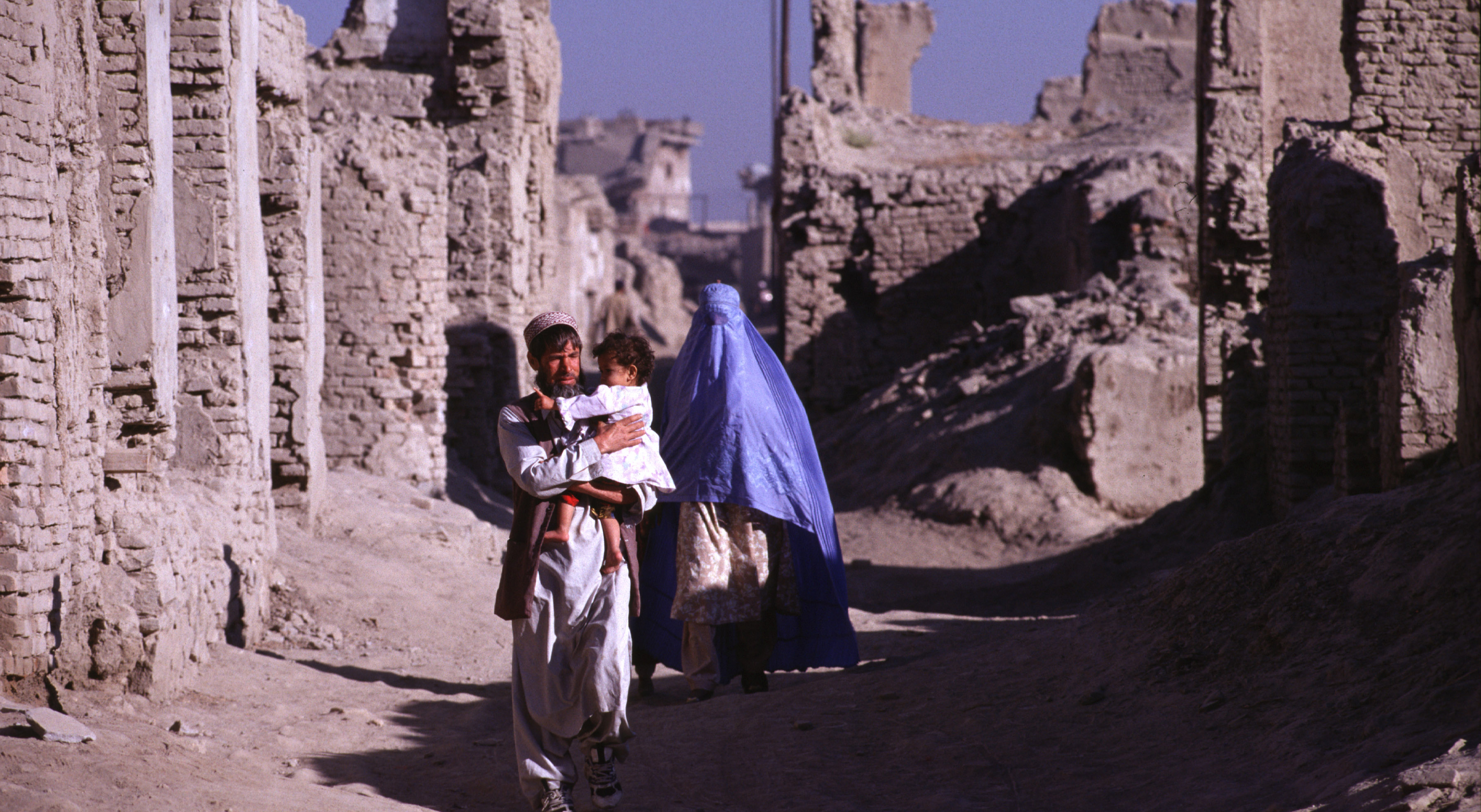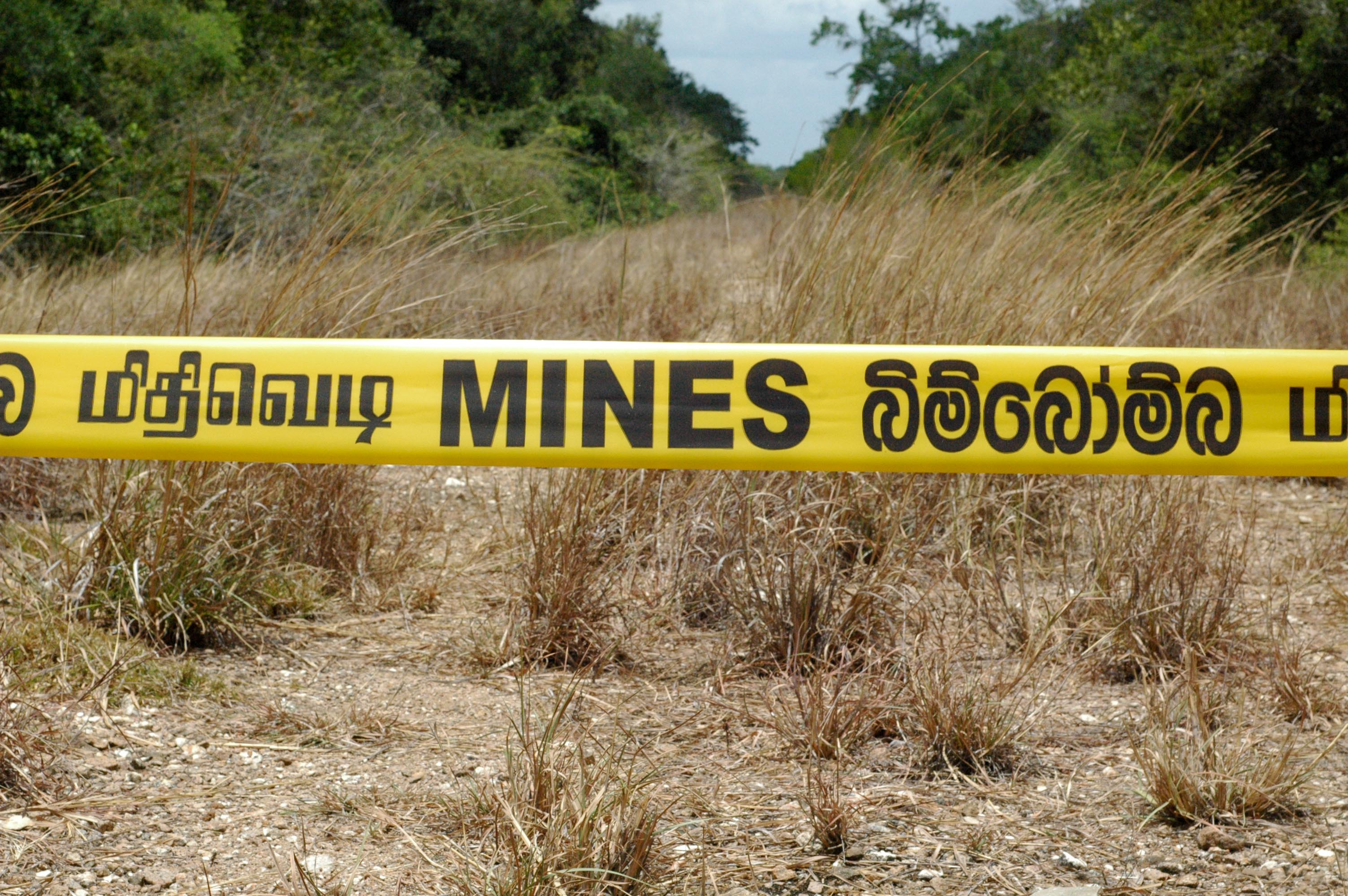Case prepared by Pierpaolo Castiglioni, Yiota Constantinides and Fiammetta Ferioli students at Roma Tre IHL Legal Clinic, under the supervision of Prof. Giulio Bartolini and Dr. Tommaso Natoli
A. Sudan: United Nations Mine Action Service and the Sudanese Government, 19 million square meters are cleared from mines in Sudan
The United Nations Mine Action Service (UNMAS) Director Habibulhaq Javed has announced that his organization has managed, in collaboration with the Sudanese government, to clear 19 million square meters from UXO and land mines in the east African country.
He said Italy aided the mine action plan in Sudan with 250.000 Euros, considering the Italian aid as a good beginning and an incentive for the rest of international donors to follow suit.
Javed said Thursday in a joint press conference with Italy’s Ambassador to Sudan Fabrizio Lobasso in Khartoum, that the danger of mines still looms.
The UNMAS programme in Sudan still needs $ 12.4 million to implement the 2016 mine action plan for Sudan, he said.
“This contribution will enable UNMAS to clear and release 900,000 square meters of land in the Talkok locality, Kassala province, and will allow us to provide risk education to 5,000 people”, he said.
The contribution will also support UNMAS to strengthen the National Mine Action Center’s (NMAC) capacity for quality assurance and project management, resulting in increased national ownership, he further said.
The Sudanese eastern states, in particular Kassala, which saw protracted fighting between government and opposition forces up to 2006, is seen as one of the areas affected by land mines.
Sudan in 2006 signed a peace treaty with rebels of the East Front in the Eritrean capital Asmara.
[...]
According to the International Mines Agreement, Sudan was supposed to be declared mine-free by April 2014, but the resumption of fighting in the Blue Nile and South Kordofan made it difficult to attain that goal, prompting the deadline to be extended to 2019.
Javed noted that mine clearance needs a lot of money and a long time. Sudan needs $90 million to get rid of the mines and explosives, he said.
He further appreciated the cooperation of the Sudanese Government and its commitment to destroy its stockpile of mines in keeping with the International Mines Agreement.
[…]
The UN official has called upon international mine action agencies to return to Sudan, indicating that the government of Sudan has pledged to facilitate their mission.
He said Sudan has done what is required from it and is committed to the Anti-Personnel Mine Ban Convention (The Ottawa Treaty) and had destroyed all its stockpile of mines in 2008.
For his part Italy’s Ambasador Fabrizio Lobasso has said his country was committed to boost global mine action plans and is very concerned about the threats posed by land mines and other explosive materials in Sudan.
He indicated the new role played by his government as leader of the team for mines control, urging other donors to boost the UN mine removal activity in Sudan.
As head of the group for mine control, Italy urges other donors to join in to support this programme and other international mine control programmes, he said.
B. Sudan: Commitment to continue clearing the country of landmines
[…]
At least 105.7 sq km of dangerous areas and 37,898 km of roads have been cleared in Sudan of various types of landmines and unexploded ordinances (UXOs), providing unhindered passage and the freedom to cultivate land and graze livestock to hundreds of thousands of people living in fear of mine accidents. The presence of landmines also deters the return of IDPs or refugees to their home areas and can prevent children from going to school due to the risks. The delivery of humanitarian assistance and people’s access to basic services (water and sanitation, health and education) in contaminated areas is also affected as aid organizations are unable to safely reach people in need.
In a meeting with the donor community and the United Nations Resident and Humanitarian Coordinator, the United Nations Mine Action Service (UNMAS) together with Sudan’s National Mine Action Center (NMAC) said that 20 per cent of known contaminations remain to be handled, most in South Kordofan and Blue Nile states. Since 2015, when UNMAS was invited to return Sudan after a four-year respite, the country has declared Red Sea and Gedaref states free of landmines.
The meeting served to launch Sudan’s pledge for an extension to their time-bound commitment to clear the country of landmines and UXOs for good, previously set for the end of 2018. This commitment was made under the terms of Article 5 of the Anti-Personnel Mine Ban Convention – ‘Ottawa Treaty.” The meeting also celebrated the hand-over of the Sudan mine action chairmanship from Italy to the United States, with both countries leading in the global fight to permanently ban landmines and explosives remnants of war (ERW).
Albeit improved, nine out of 18 Sudanese states are affected by landmines and ERWs, according to UNMAS. Being laid since before the 1956 end to Sudan’s war for independence, led by the NMAC, with support from UNMAS, 10,275 anti-personnel mines, 3,237 anti-tank mines, and 83,774 UXOs were found and destroyed, clearing the way for agricultural activities and the free movement of people and goods.
Kassala State is next on the list of states to be declared free of known landmines, said UNMAS. The ERW situation is most uncertain in Darfur, which is considered free of traditional anti-personnel mines, but is known to host thousands of UXOs. No less important is the issue of the destruction of weapons currently being collected by Sudan’s security forces in a bid to disarm non-state actors.
[…]
C. Sudan People’s Liberation Movement–North neutralizes anti-personnel mines
In November, the Sudan People’s Liberation Movement–North (SPLM-N) neutralized 211 stockpiled anti-personnel mines with the support of a technical expert brought in by Geneva Call. This first step towards the total destruction of the SPLM-N’s stockpiles follows its signature of Geneva Call’s Deed of Commitment banning anti-personnel (AP) mines in 2013. In a region that is heavily contaminated by explosive remnants of war, neutralizing these dangerous devices is essential to avoid further civilian casualties.
When SPLM-N leaders signed the Deed in 2013, they declared owning a stockpile of captured AP mines, and in accordance with the Deed of Commitment, they pledged to destroy it. Since that date, Geneva Call has sought to facilitate its destruction. After a first assessment in June 2015, a team composed of Fred Meylan, Geneva Call’s Programme Director for Africa, and a technical expert got access to some of these devices and facilitated their safe neutralization by the SPLM-N.
Geneva Call will pursue its efforts to engage with the SPLM-N in order to achieve the total destruction of all its anti-personnel mines. “The neutralization of 211 anti-personnel mines could save 211 lives. However, the total stock should now be completely destroyed to ensure full compliance with the Deed of Commitment,” added Fred Meylan.
Geneva Call also took the opportunity to run several awareness-raising courses for civil society organizations and SPLM-N commanders from a particularly isolated area of the conflict, the Blue Nile region. These courses focused on the obligations contained in the Deed of Commitment banning AP mines but also those in the Deed of Commitment protecting children in armed conflict, which the SPLM-N signed earlier this year.
The SPLM-N is militarily active in the Sudanese provinces of South Kordofan and Blue Nile, along the border with South Sudan. These two areas have been severely affected by the armed conflict that erupted there in 2011 between the SPLM-N and the Sudanese armed forces. As a consequence, tens of thousands of people took shelter in refugee camps in South Sudan, and thousands more have been displaced internally.
Discussion
I. Classification of the situation and applicable law
1. How would you classify the situation in Sudan? What additional information would you require in order to make such a determination? (
GC I-IV, Art. 3;
AP II, Art. 1) Would Additional Protocol II be applicable to the situation? Why?
2. Can a “Deed of Commitments” be qualified as a “special agreement” under
GC I-IV, Art.3?
3. Does the classification of the conflict matter for determining whether IHL was respected in this case? Why?
II. Demining Action
5. Do non-state armed groups that are parties to the conflict have demining obligations under IHL? What is the legal basis for the obligations of the SPLM-N with regard to demining? (
CIHL, Rule 83;
CCW Amended Protocol II , Art.10)
6. What is the role of the third States and international or regional organizations in the mine clearance process? Do third States have a duty to co-operate? In your opinion, did the broad range of actors involved facilitate the fulfilment of the State’s obligations towards demining under IHL? (
CCW Protocol II, Article 9)
III. Elements contributing to respect for IHL
7. (Document C) In your opinion, what may be the incentives of a non-state armed groups like SPLM-N to sign Deeds of Commitment and to pledge to destroy anti-personnel landmines?
8. Is the role of organizations like Geneva Call important to generate better respect for IHL? Why? How?
9. (Document A) Why is it important, according to UNMAS, to increase ntaional ownership over the demining process?
10. (Documents A and B) Apart from humanitarian considerations, why do you think third States and international agencies are supporting the parties to the conflict in their mine-clearance efforts? Do you think that mine-clearance contributes to peace and stability in the country and in the region?
11. (Document B) Why is mine clearance important when considering the end of hostilities and the return to peace? What lessons learned could be drawn from the Sudanese situation to encourage parties to conflicts not to use mines in the first place?
